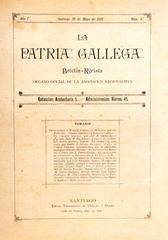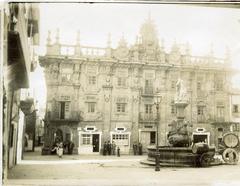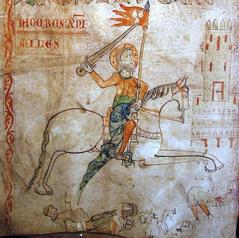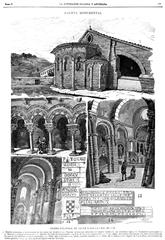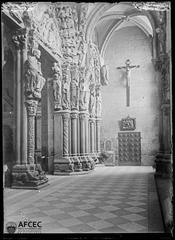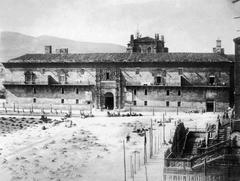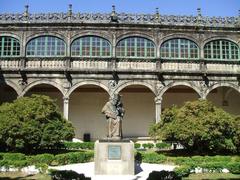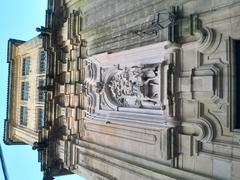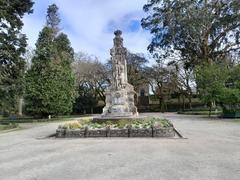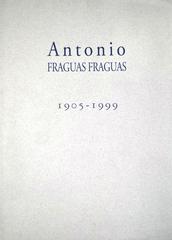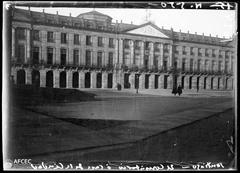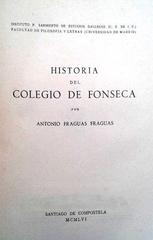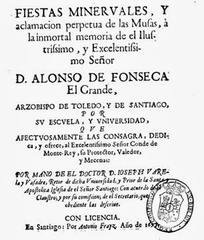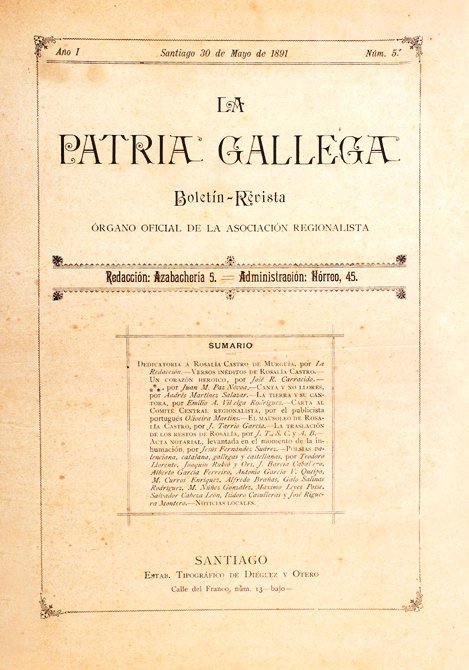
Visiting the Panteón de Galegos Ilustres: Hours, Tickets, and Essential Tips for Santiago de Compostela Historical Sites
Introduction
The Panteón de Galegos Ilustres stands among Santiago de Compostela’s most revered historical sites, offering visitors a unique journey through the lives and legacies of Galicia’s most celebrated figures. Situated within the remarkable Iglesia-Convento de San Domingos de Bonaval, this site is not only architecturally stunning but also deeply woven into the cultural and political fabric of Galicia. This in-depth guide provides detailed information on visiting hours, ticketing, accessibility, and practical tips to help you make the most of your visit to the Panteón and its surroundings.
Location and Access
The Panteón is found within the Iglesia-Convento de San Domingos de Bonaval, at Costa de San Domingos, 15703 Santiago de Compostela, Spain. Just minutes on foot from the Cathedral and the iconic Praza do Obradoiro, the location is easily accessible for pilgrims and tourists. Entry is through the cloister, which also houses the Museo do Pobo Galego, in the tranquil Bonaval neighborhood (101viajes.com; packing-up-the-pieces.com).
Opening Hours and Admission
Museum and Panteón Hours:
- Tuesday to Saturday: 10:30–14:00 and 16:00–19:30
- Sunday: 11:00–14:00
- Closed on Mondays (granhotellosabetos.com; 101viajes.com)
Admission Fees:
- Church (including the Panteón): Free entry
- Museo do Pobo Galego: €4 for standard adult admission
- Guided tours: Available seasonally, often by prior arrangement and with an added fee (packing-up-the-pieces.com)
Always verify details on the Museo do Pobo Galego website before your visit, as opening hours and ticketing may change for holidays or events.
Visitor Experience and What to Expect
The Setting
Housed in the Gothic-Renaissance church of San Domingos de Bonaval, dating from the 13th century, the Panteón impresses with its powerful stone walls, high arches, and serene, contemplative ambiance. The architectural setting underlines both the spiritual and civic importance of the site (101viajes.com).
The Panteón Spaces
The Capela da Visitación and the Capela do Santo Cristo are the principal spaces where the tombs of Galicia’s illustrious figures reside. Memorial plaques and inscriptions provide context, and the overall feeling is one of solemn dignity (gl.wikipedia.org).
Notable Figures Interred
Among those commemorated are:
- Rosalía de Castro (poet and feminist icon)
- Alfredo Brañas (regionalist thinker)
- Francisco Asorey (sculptor)
- Ramón Cabanillas (poet)
- Domingo Fontán (geographer)
- Alfonso Daniel Rodríguez Castelao (artist, writer, nationalist politician)
Rosalía de Castro’s mausoleum, created by Jesús Landeira Iglesias, is especially notable (gl.wikipedia.org).
Guided Tours
Guided tours, led by historians or museum staff, offer valuable insights into the Pantheon’s origins, its architectural and artistic features, and the biographies of those interred. These tours can be arranged in advance and are recommended for a richer experience (santiagoturismo.com).
Accessibility
The site is generally accessible, with the main entrance at street level and staff available to assist visitors with reduced mobility. Some areas may be more challenging due to the historic nature of the building; contact the museum ahead to discuss specific needs (museodopobo.gal).
Essential Tips for Visitors
Combine with Museo do Pobo Galego
The Panteón connects directly to the Museo do Pobo Galego, Galicia’s foremost ethnographic museum. A combined visit offers a comprehensive perspective on Galician identity and history. The museum’s famous triple spiral staircase by Domingo de Andrade is a highlight (packing-up-the-pieces.com; 101viajes.com).
Photography
Photography is generally permitted, but flash may be restricted, especially in the Pantheon, to protect artworks and monuments.
Best Times to Visit
- Weekday mornings are quieter and more contemplative.
- Rainy days provide an atmospheric experience inside the stone church.
- June 23rd (San Juan Festival): While the Bonaval area is festive, the Panteón remains a place of respect (santiagoturismo.com).
Duration
Allow at least 1–1.5 hours for the Panteón and church, and an additional 1–2 hours for the museum and Bonaval Park.
Language
Information panels are in Galician and Spanish. Some materials and tours are available in English, particularly during high season.
Respectful Conduct
Maintain a quiet, respectful presence and avoid touching tombs or monuments.
Frequently Asked Questions (FAQ)
Q: What are the Panteón de Galegos Ilustres visiting hours?
A: Tuesday to Saturday, 10:30–14:00 and 16:00–19:30; Sunday, 11:00–14:00; closed Mondays.
Q: Is there an entrance fee?
A: The church and Panteón are free. Museo do Pobo Galego charges €4 for adults.
Q: Are guided tours available?
A: Yes, especially during peak seasons or by prior arrangement, with possible additional fees.
Q: Is the site accessible for visitors with reduced mobility?
A: The entrance is at street level, and staff can assist. Some areas may be challenging due to historic architecture.
Q: Can I take photos?
A: Yes, but avoid flash in the Pantheon.
Q: What is the best time to visit?
A: Weekday mornings are peaceful; rainy days are atmospheric. The site is closed Mondays.
Nearby Amenities and Attractions
- Bonaval Park: Adjacent gardens with panoramic city views (packing-up-the-pieces.com).
- Praza do 8 de Marzo: Nearby for coffee or people-watching.
- Old Town: Santiago’s historic center, a UNESCO World Heritage Site, with restaurants, shops, and more (caminosantiagocompostela.com).
Sustainable and Responsible Tourism
Support local businesses, use public transport, and respect the site’s cultural and spiritual significance (caminosantiagocompostela.com).
Practical Contacts
- Museo do Pobo Galego / Panteón de Galegos Ilustres
Address: Costa de San Domingos, s/n, 15703 Santiago de Compostela, A Coruña, Spain
Phone: +34 981 583 620
Official Website
For the latest information, consult the Museo do Pobo Galego website or Santiago Tourism portal.
Conclusion
The Panteón de Galegos Ilustres is a profound testament to Galicia’s storied past and vibrant cultural identity. Its blend of medieval architecture, solemn memorials, and accessible location make it an essential stop for any visitor to Santiago de Compostela. Enhance your visit by pairing it with the Museo do Pobo Galego and Bonaval Park, and be sure to check for guided tours and special events.
For further insights, travel tips, and downloadable audio guides, explore our related articles and consider the Audiala app for an enriched experience.
Internal Links
Summary & Call to Action
The Panteón de Galegos Ilustres is much more than a mausoleum—it is a living symbol of Galician culture, pride, and resilience. Its history, architecture, and the remarkable individuals commemorated within make it a cornerstone of Santiago de Compostela’s heritage. With accessible facilities, regular tours, and proximity to complementary attractions, it is a must-see for anyone wanting to experience the heart of Galicia. Check the latest visiting hours, plan your journey, and immerse yourself in Galician heritage at this iconic monument (Faro de Vigo; Diario de Santiago).
References and External Links
- This is a sample text. (Lonely Planet)
- This is a sample text. (La Voz de Galicia)
- This is a sample text. (Museo do Pobo Galego)
- This is a sample text. (Faro de Vigo)
- This is a sample text. (Diario de Santiago)
